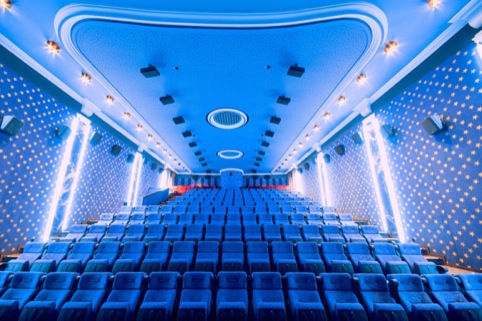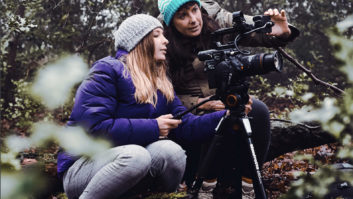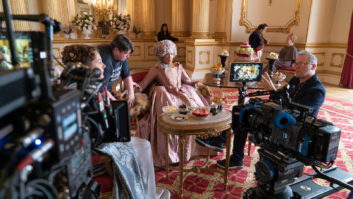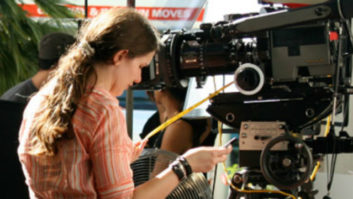Crafting the perfect soundscape is fundamental to good storytelling in film. Get it right and your audience will find themselves drawn into the narrative, immersed into the story you are telling. Get it wrong, and your audience will snap out of that revelry in the blink of an eye. But what separates the good from the bad? And what exactly is a soundscape anyway? Let me explain.
If you look around, you’ll likely find many different definitions for what a soundscape is. Some (incorrectly) suggest it to be merely musical in nature, but this isn’t the case. One of the better definitions I’ve seen is this:
A soundscape is a sound or combination of sounds that forms or arises from an immersive environment.
In summary, it’s the sounds that make up the world around us. In everyday life these sounds are all around us – the wind in the trees, the cars driving by – but in film, these sounds have to be meticulously crafted for each scene, to bring the listener into this artificial environment and make them feel like they’re really there.

But why is this so important? Do we really notice these subtleties when we’re watching something? As it turns out, yes, we do. And it’s just who we are as humans. Throughout our evolution, the ability to detect sounds played a pivotal role in survival. If we think of the traditional cavemen, you can imagine how important it was for them to be able to hear approaching predators – if you didn’t spot them coming, you’d be ending up as dinner. Since then, it’s been pretty much hard-wired into us to always be listening, just in case a sabre-toothed tiger happens to be passing by.
Of course, it isn’t solely down to the fear of being eaten. Even in today’s world we remain vigilant to loud or unexpected sounds, which startle us so that we can quickly respond to any threats. Sound also helps us navigate the world around us – marking the presence of other people, vehicles and objects. Not to mention that communicating through speech is fundamental to our lives. All that being said – we are very sensitive to sound, and its meanings. Which is something that can be exploited very effectively when crafting soundscapes.
There are a tonne of examples of great soundscapes that successfully immerse their audience in the story. When thinking about the ideas I touched on earlier about how we are vigilant to sounds that might indicate threat, I think an interesting example is the sound design in A Quiet Place. For those unfamiliar, the film features a post-apocalyptic world which has been invaded by blind extra-terrestrial creatures with exceptional hearing. Thus, any character that hopes to live past lunchtime has to be pretty good at not making any noise. This makes for an interesting soundscape, as the usual prominent dialogues and sound design are replaced with a generally sparse and quiet soundscape. In this case, it places you within a space that’s devoid of the usual sounds of human daily life, and instead features only subtle rustlings, a gentle breeze, and the buzz of insects, to make you feel like you are truly a part of this post-apocalyptic world.

Sound designers have been creating cleverly crafted film soundscapes for decades, and as time goes on new technologies have enabled them to continue to improve the immersive experience. One such advancement is in the use of spatial audio. Where films began in mono, they evolved over time to use more channels, with todays latest innovation being Dolby Atmos – a system that allows you to place sounds more dynamically, opening up the horizontal plane so you can have sounds above the listener. Clearly the use of this lends itself very well to helping immerse the audience into the story you are telling, as they can feel completely surrounded by the soundscape that has been created. This is something that is becoming increasingly popular in the world of music too, with innovative companies like Spheretrax offering their music in Dolby Atmos to meet the needs of film producers, ad agencies and gaming companies for immersive music for their content.
Spatial audio isn’t just evolving in film either. In the world of gaming, a lot of recent releases have chosen to mix their games in Dolby Atmos, meaning that players using headphones can benefit from a binaural experience that gives the illusion of 3-dimensional sound. Once again, it comes down to immersing the player into the environment with a soundscape that surrounds them, bringing them closer to the game they are playing. When combined with virtual reality technology, the effect can be quite stunning.
The rollout of Dolby Atmos technologies is still an ongoing process, but it is likely that the future will see more screens and theatres around the world embracing it, as the benefits for the audience are apparent. Meanwhile, sound designers continue to find their own ways of breaking the mould. Check out The Sound Of Metal for a great example of an effective soundscape – the film follows the life of a drummer who begins losing his hearing, and the sound design mimics the feeling of this very closely, letting you really feel what the character is going through.
People will always find new ways to innovate, whether that’s through new technologies or simply through creative use. We can’t know for sure what new inventions may change how soundscapes are created or experienced, but you can be sure that the experience is only going to get more immersive.







